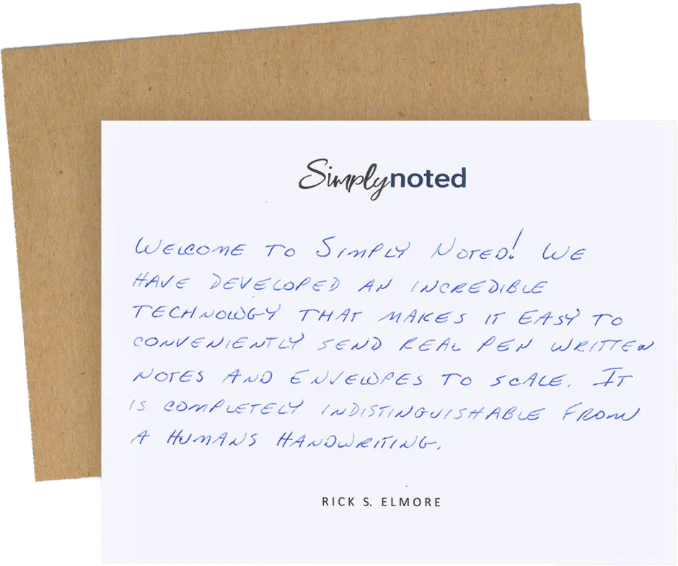First-Class Mail vs. Standard Mail

When you stick a postage stamp on an envelope and pop it in the mail, you’re sending that letter first class. That’s the service most of us are familiar with when it comes to the U.S. Postal Service. However, it isn’t the only option available.
If you’re looking to send out a direct mail campaign, you may consider standard or marketing mail. This service will save you money over first-class mail, but it does have limitations. This article will discuss the differences between the two and their strengths and weaknesses so that you can make an informed choice for your next campaign.
SEE ALSO: 5 Ways to Use Snail Mail
WHAT IS FIRST-CLASS MAIL?
First-class mail is the service we use every day to pay bills, send birthday cards, and handle other important correspondence. It’s the fastest of the two options. The service delivers locally within one to three business days and nationally within four.
This speed comes at a price. First-class mail is more expensive than standard mail, but it also grants you extra flexibility. Unlike standard mail, you can send individual pieces with first class. That’s why it’s the choice for personal correspondence. Rarely do individuals need to send bulk mail.
And while the price is higher than standard mail, first class is still very affordable. Standard-sized, rectangular envelopes start at $0.55 and go up per ounce. Square, oversized, or unusually shaped envelope stamps start at $0.75.
Standard postcards start at $.036, and if you have oversized postcards, your cost steps up to $0.55. Large letters start at $1.00, and small packages start at $4.00.
First-class comes with a few extras as well. If you send a letter to an outdated address, the post office will forward it or return it to you at no extra charge. Finally, you can opt for certified mail service when mailing first class.
SEE ALSO: Direct Mail Response Rates In 2021

HOW DOES STANDARD MAIL COMPARE?
The most significant differences between first class and standard mail service are price, delivery speed, and options. Standard mail is intended for bulk mailings. You can’t use the service for mail volumes of less than 200 pieces or 50 pounds of mail. In return for larger volumes, you’ll pay roughly 32% less.
Whereas first-class mail receives priority processing, the post office processes standard mail on a “time available” basis. As a result, delivery windows are much longer and significantly less consistent with standard mail. You can expect local deliveries within five days — usually, but not guaranteed. National deliveries take even longer. Thirteen days is a good bet, but it can take up to 21 days.
With standard mail, you won’t enjoy the benefit of mail forwarding or returns. If you send a mail piece to an outdated address using standard service, you’ll never know that it wasn’t delivered.
SEE ALSO: Why Handwritten Direct Mail Improves Response Rates
WHICH IS RIGHT FOR YOU?
One might assume that standard mail is always the best choice for direct mail campaigns given its bulk nature and lower pricing, but that’s not always the case. There are times when it’s worth paying extra for first class.
For example, if you’re advertising something time-sensitive, like an event or a special sale, first-class mail is the better option. It offers faster, more consistent deliveries. You’ll know your recipients will receive your offer within four days at the longest. With standard mail, it could take upwards of 21 days. Standard mail’s inconsistent delivery times make it very difficult to plan timed direct mail drops.
First-class mail can also be useful for culling outdated addresses from your mailing lists. If you use standard mail exclusively, you may be sending postcard after postcard to old addresses and never know it. Depending on the percentage of dead addresses, you could be wasting a lot of money. With first class, outdated mail pieces will be returned to you, allowing you to eliminate the offending addresses from your list.

Delivery and Return Analytics
First-class mail doesn’t stop with free forwarding and returns. Using the postal service’s Intelligent Mail Barcode system (IMB), marketers can collect rich data about their mailings as they route through the postal system. Barcodes are scanned at critical points throughout your campaign’s journey, providing information that you can import directly into your marketing automation.
It’s worth noting that IMB is available for standard mail as well, but because of the service’s inconsistent processing, IMB can miss a significant number of possible scans. For comparison, first-class mail is scanned roughly 95% of the time. Standard mail scannings can drop as low as 40%. That’s simply too inconsistent to be useful.
With first-class IMB, you can get “Processed for Delivery” notifications 1 to 2 days before delivery, useful for triggering other assets in a multichannel campaign. You can also use Return to Sender, and mail forwarding scans to improve your mailing list quality.
Holiday Season Mailings
First class is also a better choice during the holidays. Because standard mail is processed when time is available, it gets short shrift during peak mail periods. When cards, letters, and packages are sopping up available processing time during the holidays, standard mail suffers. First class, by comparison, is generally delivered within its normal delivery windows, even during the most hectic mail periods.
SEE ALSO: Christmas Cards for Business

SO WHEN IS STANDARD MAIL APPROPRIATE?
It comes down to price and speed. For large campaigns that aren’t time-sensitive, standard mail is almost always the best choice. It costs less and is easier to send. You don’t benefit from free forwarding and returns, but as long as you perform list maintenance regularly, you can keep outdated addresses to a minimum.
However, if you’re contending with a peak mail period or need more granular control over the date that your mailers arrive, then first class is the better option.
Finally, the type of mailer you’re sending can make a difference. Traditional mass-printed direct mailers can be sent standard mail without impacting performance, as long as the message isn’t time-sensitive. Handwritten direct mail pieces, on the other hand, can benefit from first class. Having standard postage on the envelope can help complete the illusion. At Simply Noted, our automated handwriting machines use real ballpoint pens to craft convincing handwritten mailers and envelopes. Sending them first class helps your open rates and is worth the extra investment.
SEE ALSO: Why Handwritten Direct Mail Outperforms Print Mail
Have any other questions about first class vs standard mail? Give us a call. We’d be happy to help.























